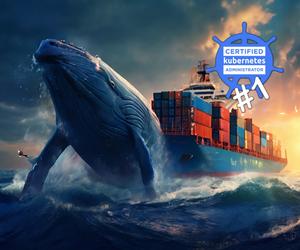
Enough is Enough? Quit X, Switch to BlueSky
Since the acquisition of Twitter by Elon Musk in October 2022, renamed X, the platform has undergone profound structural and strategic changes. Among these are drastic staff reductions, particularly impacting teams responsible for content moderation and security. This lack of oversight has led to a significant rise in problematic content, seemingly amplified by new algorithms. These include hate speech, misinformation, and conspiracy theories. The situation worsened during Donald Trump’s presidential campaign in November 2024. Musk, who publicly supported Trump by investing $118 million in his campaign, became a prominent figure promoting far-right ideologies and misinformation. As a result, many public figures, media outlets, and institutions decided to leave the platform, condemning its amplification of harmful content and an environment increasingly at odds with their values.
Meta (Facebook, Instagram, WhatsApp, and Threads)
The CEO of Meta, Mark Zuckerberg, also announced the end of the fact-checking program in the United States, replacing it with a community notes system similar to X’s. Additionally, Zuckerberg expressed a desire to reintroduce more “masculine energy” in the workplace, criticizing what he perceived as excessive diversity and inclusion policies. These initiatives seem to align Meta with the policies of the Trump administration, signaling closer ties with the government.
Alternatives: Bluesky and Mastodon
- Bluesky: Initiated in 2019 by Jack Dorsey, co-founder of Twitter, Bluesky became an independent company in 2021. It is built on the AT Protocol, designed to create a decentralized social network while offering a unified user experience. Unlike Mastodon, Bluesky offers a more centralized interface with plans for future federation. This approach has attracted many users: the platform gained over 5 million sign-ups within five days of Trump’s election, reaching 27.6 million users by January 2025.
- Mastodon: Launched in 2016 by Eugen Rochko, Mastodon is a decentralized microblogging platform. It operates on the ActivityPub protocol, allowing users to join or create independent “instances” (servers) with their own rules and moderation. This structure fosters specific communities and greater user autonomy.
A Growing Collective Trend
The hashtag #HelloQuitX, along with variants like #HelloQuitteX in France, became a collective rallying cry to leave X following Trump’s election. Supported by academics, associations, and public figures, this movement has driven awareness campaigns encouraging users to migrate to more ethical social networks.
A clear trend is emerging: many users leaving X are transitioning to Bluesky, a platform reminiscent of Twitter’s user experience before its recent changes. Bluesky also benefits from its strategic positioning as a decentralized alternative, thanks to its adoption of the AT Protocol. While temporarily maintaining a centralized structure to simplify the onboarding process, this compromise appeals to users deterred by the perceived complexity of Mastodon or Meta’s new policies. Additionally, Bluesky attracts users with its stricter moderation and a growing community that values respectful and inclusive interactions.
- Alternatives: Bluesky and Mastodon
- A Growing Collective Trend
- Bluesky PDS: A Technical Solution for Experts
- Step-by-Step Installation Guide for Bluesky PDS
- Responsibilities as an Administrator
- Conclusion
Bluesky PDS: A Technical Solution for Experts
Bluesky stands out for its innovative approach to decentralization, built on its AT Protocol (Authenticated Transfer). At the core of this architecture lies the Bluesky PDS (Personal Data Server), offering advanced users the ability to directly control their data and online presence.
What is Bluesky PDS?
The Bluesky PDS is a solution designed to independently host and manage your data while interacting with the Bluesky network. Unlike relying on a centralized instance, as is common with most social networks, Bluesky PDS allows technical users and organizations to:
- Control their personal data: By hosting a PDS server, users retain full ownership of their content and metadata, reducing reliance on a single platform.
- Customize their experience: PDS administrators can tailor moderation settings, dissemination algorithms, and interaction policies to meet their specific needs.
- Federate with other instances: By integrating the AT Protocol, each PDS can seamlessly interact with other servers, creating a decentralized yet interoperable ecosystem.
Who is Bluesky PDS for?
Bluesky PDS is primarily aimed at technical experts, such as developers, system administrators, and organizations seeking full control over their data and online interactions. Setting up a PDS requires technical expertise in deployment, hosting, and maintenance.
A Simpler Alternative for Casual Users
For users who prefer not to manage the technical aspects of a PDS, the easiest solution is to create an account directly on the official Bluesky platform via https://bsky.app/. This option provides an intuitive, ready-to-use experience, ideal for exploring the network with minimal effort.
For advanced users or technical professionals interested in deepening their use of Bluesky and actively contributing to the decentralized ecosystem, this article will explore the steps necessary to install and configure a Bluesky PDS on your own infrastructure.
Step-by-Step Installation Guide for Bluesky PDS
Here is a step-by-step guide to installing Bluesky PDS on your server, based on the official Bluesky PDS repository:
Prerequisites
To install and configure Bluesky PDS, you will need the following:
- A server with a public IPv4 address or a public DNS name accessible from the Internet.
- Server administration access with root or sudo privileges.
- A valid domain name under your control, configured to point to your server.
- Basic knowledge of system administration and command-line tools.
Recommended Hardware Resources
| Operating System | Ubuntu 20.04/22.04 or Debian 11/12. |
| Memory (RAM) | 1 GB |
| CPU Cores | 1 |
| Storage | 20 GB SSD |
| Architectures | amd64, arm64 |
| Number of Users | 1-20 |
This minimal configuration is sufficient to host a small Bluesky PDS instance for personal or small community use.
Step 1: DNS Configuration
- Point your domain name to your server’s IP address by setting up the appropriate DNS records with your domain registrar.
- Example:
- Suppose I have a domain
example.comhosting multiple applications. I will create a subdomainpds.example.comto host my Bluesky PDS. - For this, I will create the following DNS records pointing to my Bluesky PDS server’s IP address, e.g.,
12.34.56.78:
- Suppose I have a domain
| Name | Type | Value | TTL |
|---|---|---|---|
pds.example.com | A | 12.34.56.78 | 600 |
*.pds.example.com | A | 12.34.56.78 | 600 |
Step 2: Preparing the Server
- Connect to your server via SSH:
ssh <user>@<server_ip_address>- Update existing packages:
sudo apt update && sudo apt upgrade -yStep 3: Download the Installation Script
To download the Bluesky PDS installation script, run the following commands on your server via SSH.
You can use either wget or curl to retrieve the installation script from the official Bluesky repository.
- Using
wget:
wget https://raw.githubusercontent.com/bluesky-social/pds/main/installer.sh- Or using
curl:
curl https://raw.githubusercontent.com/bluesky-social/pds/main/installer.sh >installer.shStep 4: Run the Installation Script
Once the script is downloaded, run it as an administrator using the following command:
sudo bash installer.shThis script will automatically install all necessary dependencies and configure the required services to run your Bluesky PDS instance:
- Installation of Docker and Docker Compose.
- Downloading the Docker images for Bluesky PDS (3 images).
- Starting the Docker containers.
- Setting up systemd services to enable auto-start on server reboot.
- Configuring a Let’s Encrypt TLS certificate with automatic renewal via the Caddy web server.
During execution, the script will prompt you for certain inputs:
Enter your public DNS address:- Following our example, you should enter
pds.example.com. Adapt this to your specific domain name.
- Following our example, you should enter
Enter an admin email address:- Provide a valid email address. This will be used by Let’s Encrypt to manage your TLS certificate (it can be from any domain, e.g., gmail.com, proton.me, etc.).
Create a PDS user account? (y/N):- Answer
N. We will perform this action later.
- Answer
You should see the following output in the logs:
/pds.service.
* Downloading pdsadmin
===============================================================================
PDS installation successful!
-------------------------------------------------------------------------------
Check service status : sudo systemctl status pds
Watch service logs : sudo docker logs -f pds
Backup service data : /pds
PDS admin command : pdsadminStep 5: Verifying the Installation
After completing the installation of Bluesky PDS, it is important to ensure your server is online and functioning correctly. Follow these steps to confirm your setup is operational:
5.1. Check Docker Images
View the Docker images that were downloaded by running the following command:
sudo docker psThis should return output similar to:
CONTAINER ID IMAGE COMMAND CREATED STATUS PORTS NAMES
36924479e72e caddy:2 "caddy run --config …" 23 hours ago Up 23 hours caddy
a13a320572eb ghcr.io/bluesky-social/pds:0.4 "dumb-init -- node -…" 23 hours ago Up 23 hours pds
67b03b48e7ea containrrr/watchtower:latest "/watchtower" 23 hours ago Up 23 hours (healthy) watchtower5.2. Check Server Logs
To diagnose potential issues or confirm proper functionality, you can view the Docker logs for your PDS server with the following command:
sudo docker logs -f pdsThe output should display logs similar to the following:
{"level":30,"time":1737107986429,"pid":7,"hostname":"PDS","name":"pds","req":{"id":372,"method":"GET","url":"/xrpc/chat.bsky.convo.getLog","query":{},"params":{},"headers":{"user-agent":"Mozilla/5.0","accept":"*/*","accept-encoding":"gzip, deflate","accept-language":"fr-FR","dnt":"1","origin":"https://bsky.app"}},"res":{"statusCode":200,"headers":{"cache-control":"private","content-length":"36","content-type":"application/json; charset=utf-8"}},"responseTime":2771,"msg":"request completed"}
{"level":30,"time":1737110436039,"pid":7,"hostname":"PDS","name":"pds","req":{"id":381,"method":"GET","url":"/","query":{},"params":{},"headers":{"user-agent":"Mozilla/5.0","accept":"*/*","accept-encoding":"gzip"}},"res":{"statusCode":200,"headers":{"cache-control":"private","content-length":"126","content-type":"text/plain; charset=utf-8"}},"responseTime":2,"msg":"request completed"}5.3. Verifying the PDS Service Startup
Check the status of the Bluesky PDS service to confirm it is running:
sudo systemctl status pdsThis should return:
● pds.service - Bluesky PDS Service
Loaded: loaded (/etc/systemd/system/pds.service; enabled; preset: enabled)
Active: active (exited) since Thu 2025-01-16 11:58:41 UTC; 24h ago
Docs: https://github.com/bluesky-social/pds
Process: 138062 ExecStart=/usr/bin/docker compose --file /pds/compose.yaml up --detach (code=exited, status=0/SUCCESS)
Main PID: 138062 (code=exited, status=0/SUCCESS)
CPU: 173ms
Jan 16 11:58:34 PDS docker[138074]: Container caddy Creating
Jan 16 11:58:34 PDS docker[138074]: Container watchtower Created
Jan 16 11:58:36 PDS docker[138074]: Container caddy Created
Jan 16 11:58:36 PDS docker[138074]: Container pds Starting
Jan 16 11:58:36 PDS docker[138074]: Container watchtower Starting
Jan 16 11:58:38 PDS docker[138074]: Container watchtower Started
Jan 16 11:58:39 PDS docker[138074]: Container pds Started
Jan 16 11:58:39 PDS docker[138074]: Container caddy Starting
Jan 16 11:58:41 PDS docker[138074]: Container caddy Started
Jan 16 11:58:41 PDS systemd[1]: Finished pds.service - Bluesky PDS Service.Step 6: Verifying the Connection
6.1. Opening HTTP and HTTPS Ports
If not already configured, ensure that ports 80/tcp (HTTP) and 443/tcp (HTTPS) are open to allow access from the Internet.
You can adjust these settings via your firewall or cloud provider.
6.2. Checking the Server Health
Test the availability and health of your server by accessing the health check endpoint.
- Open a web browser and visit the following URL (adjust to your domain name):
https://<pds.example.com>/xrpc/_health- If everything is functioning correctly, you should see a JSON response with the server version, for example:
{"version":"0.4.74"}6.3. Verifying WebSockets (Optional)
To ensure the Bluesky network can synchronize and retrieve content from your PDS, WebSockets must be functional. Here’s how to test them:
- Install a WebSocket testing tool, such as wsdump.
- Test WebSocket connectivity by running the following command:
wsdump "wss://<pds.example.com>/xrpc/com.atproto.sync.subscribeRepos?cursor=0"- If WebSockets are correctly configured but no content has been created in your PDS yet, the command will keep running without displaying output. This indicates that the system is ready but currently has no content to transmit.
Step 7: Creating a User Account
To set up a user account on your PDS server, follow these steps via SSH:
- Run the following command:
sudo pdsadmin account createEnter the requested information at the prompt:
Enter an email address (e.g. alice@pds.example.com):Enter a valid email address to be used for password recovery. This can belong to any domain (e.g.,gmail.com,proton.me).Enter a handle (e.g. alice.pds.example.com):Enter a fully qualified username that will be linked to a subdomain of your PDS. The handle must end with your PDS server’s domain, such as.pds.example.com.
Confirmation of creation:
If everything is properly configured, you will see output similar to the following:
Enter an email address (e.g. alice@pds.example.com): jeanjerome@my-email.com
Enter a handle (e.g. alice.pds.example.com): jeanjerome.pds.example.com
Account created successfully!
-----------------------------
Handle : jeanjerome.pds.example.com
DID : did:plc:livr8wtor8vyxsa4w064e4fs
Password : xuNPXGl8d86Lmky750r2EozC
-----------------------------
Save this password, it will not be displayed again.Important
Immediately save your password, as it will not be displayed again after account creation.
In case of an error
If you encounter an error like ERROR: Reserved handle, this indicates the chosen handle contains a reserved keyword blocked to prevent conflicts or abuse. You can find the full list of reserved keywords in the AT Protocol source file: reserved.ts.
Step 8: Configuring Email Sending
To enable your PDS to send emails (e.g., for verifying user email addresses or sending other notifications), you must configure an SMTP server.
8.1. Choose an Email Sending Service
You can use a reliable email sending service, such as Resend or SendGrid. These services offer straightforward configuration and a ready-to-use API.
- Create an account with one of these services.
- Generate an API key, which will be used to authenticate email sending from your PDS.
8.2. Configure Your PDS to Use SMTP
Edit the configuration file located at /pds/pds.env to include the following information (example using Resend):
PDS_EMAIL_SMTP_URL=smtps://resend:<your API key>@smtp.resend.com:465/
PDS_EMAIL_FROM_ADDRESS=jeanjerome@my-email.com- PDS_EMAIL_SMTP_URL: The SMTP URL of the email sending service, including your API key.
- PDS_EMAIL_FROM_ADDRESS: The email address used as the sender for emails sent by your PDS.
8.3. Ensure Network Access
Verify that your server allows outbound connections on the ports required by the SMTP service (typically port 465 for a secure connection).
8.4. Restart Your PDS
After updating the configuration, restart your PDS to apply the changes:
sudo systemctl restart pdsResponsibilities as an Administrator
As the administrator of a PDS server, you are responsible for keeping your system up-to-date, monitoring its performance, and ensuring the security of your infrastructure. Below are the key tasks you should perform regularly.
1. Keep Your PDS Updated
Bluesky regularly provides updates to fix bugs, enhance performance, and improve security. These updates are crucial for ensuring the smooth operation of your server.
- Update your PDS using the
pdsadmintool:
sudo pdsadmin update2. Keep the Operating System Updated
It is important to keep your server’s operating system up-to-date to benefit from the latest improvements and prevent security vulnerabilities.
- Apply system updates with the following command:
sudo apt update && sudo apt upgrade -y3. Monitor and Manage Performance
To detect potential issues, regularly monitor your server’s logs and status.
- View the PDS service logs with systemd:
sudo journalctl -u pds- View the PDS application logs:
sudo docker logs -f pds4. Ensure Server Security
- Perform regular backups of critical data and configuration files located in
/pds/. - Restrict access to the server by configuring a firewall and using secure connections (SSH):
- Install tools such as
ufwandfail2banfor additional protection.
- Install tools such as
- Monitor SSL/TLS certificate renewals to secure communications between users and your PDS.
5. Legal Responsibilities
As a host, you are responsible for the content published through your server. Ensure compliance with local and international laws, particularly those related to data protection and combating illegal or harmful content.
Conclusion
Social networks have become central to our digital interactions, shaping communication, opinions, and the collective perception of information.
The rise of alternatives like BlueSky, emphasizing ethics and decentralization, provides tangible solutions to issues such as toxicity and the concentration of digital power.
However, these initiatives raise new questions:
- How can responsible use of these networks be ensured, especially when they are decentralized?
- Where does freedom of expression end, and how can it be reconciled with combating misinformation and hate speech?
- What regulations should be implemented to govern these new networks while respecting fundamental rights?
- How should responsibilities be distributed between users, administrators, and platform creators?
- What economic models can sustain these platforms while adhering to their ethical values?
- How can privacy and user control over data be guaranteed?
Exploring these issues compels us to rethink our use of social networks and envision a more balanced digital ecosystem—one that respects users and defends democratic values currently under threat from autocratic regimes and opportunistic entrepreneurs.




